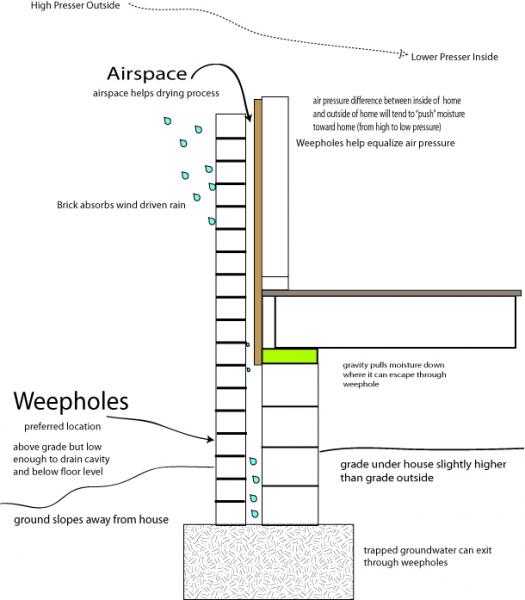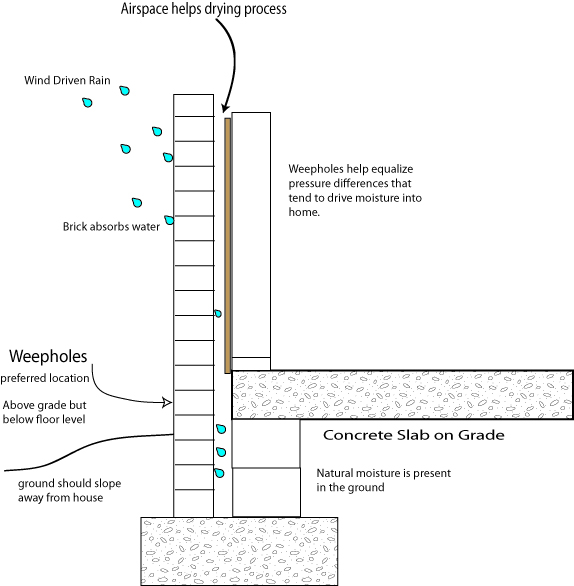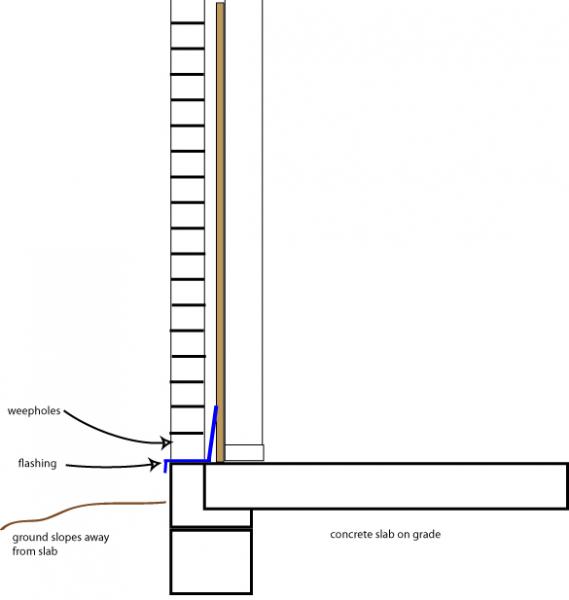- Home - Blue Palmetto Home Inspection of Summerville and Charleston
- Learn About Us and This Charleston Home Inspector
- What's Inspected
- Charleston Lowcountry Inspection Areas (geographic)
- Testimonials
- >>>Blogs (educational)
- Sample Reports & Documents
- Why Get a Home Inspection Report
- Charleston's Top Ten Reasons
- Home Inspector Photo Galleries
- Pricing
- Scheduling and Customer Information
- Home Inspection Authorization Contract
- General Scope of Work (electronic)
- Home Inspection Customer Satisfaction Survey
- Privacy Policy
- Full site
- The Roof Framers Field Manual
Goose Creek Home Inspectors explains the purpose of Weep Holes.
Submitted by Ray Thornburg on Sun, 05/05/2013 - 21:00
What are Weepholes?

Weepholes are the little gaps in brickwork near the bottom that allows moisture to escape from the wall cavity. They're required to be spaced 33" apart right above the flashing. They also help to equalize air pressure and dry the wall cavity out. Study the diagrams below.
Sometimes I see weepholes for the application pictured installed much higher but as you can see they should be at the bottom. Click image to enlarge. Brick can absorb moisture and some of that moisture can be driven by natural forces like air pressure into the wall cavity. Moisture can be trapped on the wrong side as seen on this drawing of a crawlspace over piers with a brick veneer siding if weep holes are absent.
Here is another possible application showing weepholes placed below the floor but above grade. If the weep hole was incorrectly installed above the finished floor moisture could be diverted onto floor surfaces by heavy rains or sprinklers hitting the wall in that area.
Picture at left shows another possible application. There are a few more variations on this theme but the point is the weep holes are placed immediately above the flashing
references irc 2003 R703.7.6
Ok.....Lets take a look at what we find out in the field.
Installed a little high to be of much use.
In this picture the weepholes (yellow arrows) are above the level of the garage slab (red arrow) as seen on this Goose Creek home. This is incorrect. It should be below the garage floor level. In this position it will not drain the space adequately.
Above a window is another place where you might find weep holes. Pictured here are properly drilled weep holes installed after the fact above the steel lintel. A hammer drill makes quick work of adding a weep hole where it is needed.
In this picture is a house about 30 years old with no weep holes and a raised concrete slab on grade. Can you tell where the finished floor in the house begins. That's right the lack of weep holes has made it hard for moisture to escape allowing moss to grow on it. In a raised slab the dirt under the slab will pull moisture from the ground (after it rains for instance or simply from a high water table). This makes it necessary to provide weep holes. You don't see it (moss) above the finished floor because of the natural way moisture is pulled through certain building materials thus allowing it to dry out. The damage could be worse but we have mild winters here. As bricks absorb moisture they are more subject to freeze thaw cycle damage, efflorescence, spalling etc.
This page is still under construction.




